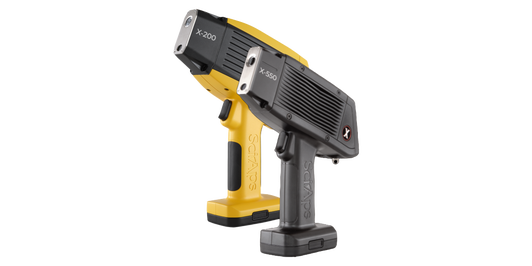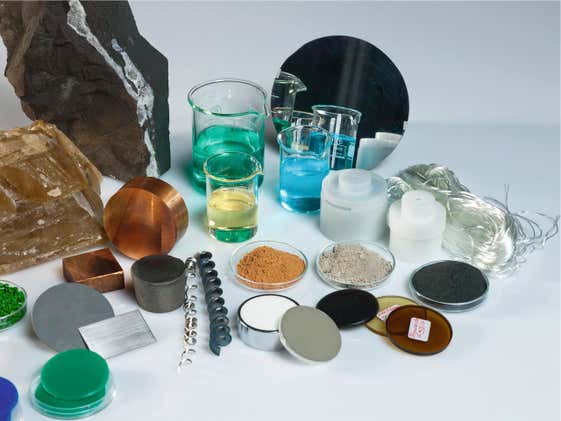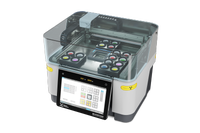XRF analyzers
Expert XRF spectrometers for elemental composition analysis

Expert XRF spectrometers for elemental composition analysis

X-ray Fluorescence (XRF) spectrometers are powerful analytical instruments designed to unveil the elemental composition of various materials. These versatile devices play a pivotal role in scientific research, quality control, and industry applications
XRF analyzers excel at elemental analysis. By measuring the energies and intensities of the emitted X-rays, they identify which elements are present and in what concentrations. This information is invaluable in fields like geology, metallurgy, archaeology, and environmental science, where knowledge of elemental composition is crucial.

In 2024, Malvern Panalytical expanded its XRF portfolio through the acquisition of SciAps, a leader in handheld and portable analytical instruments. This strategic move brings the X-Series handheld XRF analyzers and the portable PowerHouse X benchtop system into the Malvern Panalytical portfolio - extending elemental analysis capabilities beyond the laboratory and into the field.
These high-performance, mobile solutions empower users with rapid, on-the-spot analysis, making them ideal for applications such as metals and alloys sorting, mining exploration, and regulatory compliance screening.

XRF analyzers are versatile instruments renowned for their ability to provide precise and non-destructive elemental analysis. These analyzers are invaluable in various fields for their capacity to deliver a wide range of measurements and insights.
The primary function of XRF instrumentation is elemental quantification. By exposing a sample to high-energy X-rays, an XRF analyzer can precisely measure the concentration of elements within that sample.
This quantification extends across the periodic table, from light elements like carbon and oxygen to heavy metals such as lead and uranium. Researchers, manufacturers, and quality control professionals depend on XRF machines for accurate elemental data.
One of the standout features of XRF analysis is its non-destructive nature. Traditional chemical analysis methods such as ICP often require the destruction/dissolution of samples, rendering them useless for further testing or preservation.
XRF spectrometers, however, allow you to examine materials without altering or damaging them. This makes them invaluable for analyzing valuable artworks, historical artifacts, or irreplaceable geological samples.
XRF analyzers excel at multi-element analysis. They can simultaneously detect and quantify multiple elements within a single sample, offering a comprehensive picture of its composition.
This capability is particularly advantageous when dealing with complex materials, alloys, or geological samples with diverse elemental components.
XRF analysis instruments are not limited to a specific type of material. They can analyze a wide variety of sample types, including:
This versatility ensures that XRF machines can be applied in diverse industries, from manufacturing and pharmaceuticals to geology and environmental science.
XRF analyzers can measure a wide array of elements, including but not limited to:
Whether you're characterizing materials, ensuring product quality, or conducting scientific research, XRF spectrometers are indispensable tools for elemental analysis across various industries.

Malvern Panalytical offers a versatile range of X-ray fluorescence spectrometers and related products for elemental and thin film analysis. These XRF analyzers are suitable for a wide range of analysis and throughput requirements and operating environments.
Our portfolio now includes the SciAps X-series handheld XRF analyzers and the portable PowerHouse X benchtop system, expanding our capabilities into portable, high-performance solutions for in-field and on-the-go analysis.
The spectrometers range from energy-dispersive benchtop XRF systems to wavelength-dispersive high-performance XRF systems and products for semiconductor measurement.
XRF analyzers can be configured with dedicated software options for specific types of X-ray fluorescence analysis. In combination with application modules (application configuration, calibration and standards) or as a package with sample preparation products, complete analytical solutions are created. All Malvern Panalytical products are supported by our after-sales and customer service organization.
Our comprehensive range of elemental solutions caters to a diverse spectrum of applications, ensuring accurate and reliable results. With the recent acquisition of SciAps, we now also offer cutting-edge handheld XRF and LIBS analyzers - such as the X-Series, Powerhouse X, and Z-Series - expanding our capabilities into portable, field-based elemental analysis. Explore our range of elemental analysis instrumentation below.

RevontiumEnergy-dispersive XRF, designed for demanding labs. Economical footprint. 4x speed. No compromise on precision. |

ZetiumHigh end floor-standing WDXRF spectrometers |

Epsilon rangeEDXRF benchtop and on-line spectrometers |

2830 ZTAdvanced semiconductor thin film metrology solution |

Axios FASTHigh throughput simultaneous WDXRF spectrometer |

SciAps X-SeriesThe world’s lightest, smallest, fastest, high precision XRF analyzers |
|
|---|---|---|---|---|---|---|
| Measurement type | ||||||
| Thin film metrology | ||||||
| Elemental analysis | ||||||
| Contaminant detection and analysis | ||||||
| Elemental quantification | ||||||
| Chemical identification | ||||||
| Technology | ||||||
| X-ray Fluorescence (XRF) | ||||||
| Wavelength Dispersive X-ray Fluorescence (WDXRF) | ||||||
| Energy Dispersive X-ray Fluorescence (EDXRF) | ||||||
| Elemental range | Na-Am | Be-Am | F-Am | B-Am | B-Am | Mg-U |
| LLD | 0.1 ppm - 100% | 0.1 ppm - 100% | 1 ppm - 100% | 0.1 ppm - 100% | 0.1 ppm - 100% | |
| Resolution (Mn-Ka) | 145 eV | 35eV | 145eV | 35eV | 35eV | 140 eV |
| Sample throughput | Up to 200per 8h day | Up to - 240per 8h day | Up to - 160per 8h day | up to 25 wafers per hour | Up to 480 | |
| Format | Compact | Floorstanding WDXRF | Benchtop EDXRF | Semi | Floorstanding WDXRF | Handheld XRF |